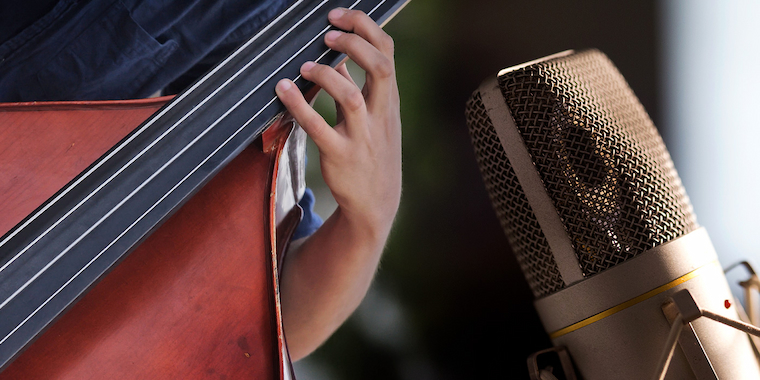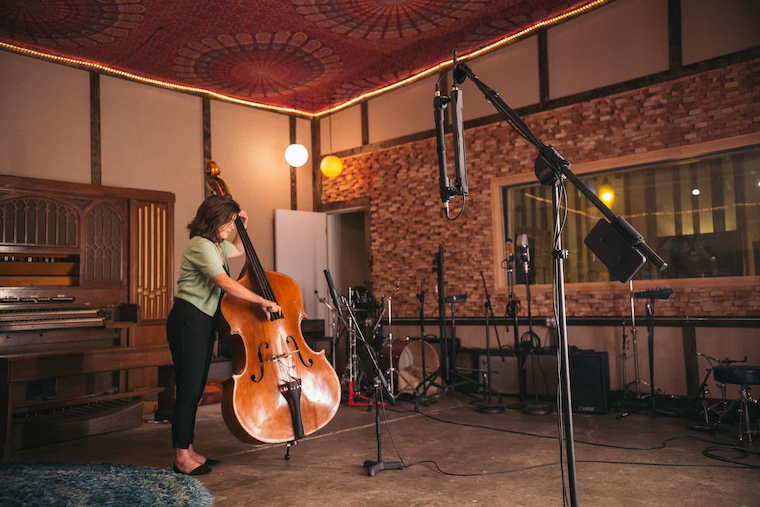Audio & Video
Choosing the Right Upright Bass for Beginners: A Guide to Starting Your Musical Journey
Stepping into the world of upright bass playing is an exciting adventure. However, the process of selecting your first instrument can be overwhelming. With so many options available, it’s easy to feel lost. Don’t worry; I’m here to help you navigate this confusing landscape and find the perfect upright bass to kickstart your musical journey.
Understanding the Upright Bass

First, let’s get familiar with the instrument. The upright bass, also known as the double bass, is the largest and lowest-pitched string instrument in the orchestra. It’s used in various genres, from classical and jazz to rock and folk. Knowing the basics about the instrument will help you make an informed decision.
Determine Your Budget
Your budget is the first consideration. Upright basses can range from a few hundred to several thousand dollars. As a beginner, you don’t need the most expensive model, but you also don’t want the cheapest one that might compromise on quality. Set a reasonable budget that balances affordability with quality. A good starting range is between $1,000 and $3,000.
Decide on New vs. Used
Next, decide whether to buy a new upright bass or a used one. A new bass ensures that you’re getting an instrument in prime condition, but it can be more expensive. A used bass can be more affordable and might have a richer, more mature sound. However, it requires careful inspection for any damage or wear. If you choose a used bass, consider taking an experienced bassist or a luthier (a person who builds or repairs string instruments) with you to check for issues.
Size Matters
Upright basses come in different sizes, with 3/4 size being the most common for adults. There are also 1/2 and 1/4 sizes, which are typically used by younger players or those with smaller frames. Ensure the bass you choose is comfortable to play. You should be able to reach the top of the fingerboard and play with ease. Don’t hesitate to try out different sizes to see what feels right.
Pay Close Attention to the Material and Construction

The materials and construction of an upright bass significantly affect its sound and durability. Look for a bass with a solid wood top, as this improves the sound quality. The back and sides can be solid wood or laminated. Solid wood produces a better sound but is more expensive and sensitive to humidity and temperature changes. Laminated basses are more durable and affordable, making them a good choice for beginners.
Ensure Proper Setup and Make Adequate Adjustments
The setup of your bass – including the bridge, strings, and fingerboard – greatly influences its playability and sound. Ensure the bass is properly set up. The strings should not be too high or too low from the fingerboard, as this affects the ease of playing and intonation. If you’re unsure about the setup, have a professional adjust it for you.
Make Sure to Test the Instrument Before Buying
Before making a purchase, it’s crucial to play the bass. Here are a few things to check:
-Sound Quality: Listen to the tone. It should be rich and resonant across all strings.
– Comfort: Make sure the bass feels comfortable when you play it. You shouldn’t have to strain to reach the strings or fingerboard.
– Condition: Look for any cracks, warps, or other damage. Check the seams and joints for any signs of separation.
A Few Tips to Help You Kick Off Your Musical Journey
Once you’ve chosen your bass, it’s time to start playing! Here are a few tips to get you going:
1. Find a Teacher: A good teacher can guide you through the basics and help you avoid bad habits. Look for someone experienced in teaching beginners.
2. Learn Proper Technique: Focus on your posture, hand positions, and bowing technique (if you’re using a bow). Proper technique is crucial for avoiding injury and developing a good sound.
3. Practice Regularly: Consistency is key. Set aside time each day to practice. Even 15-30 minutes a day can make a big difference.
4. Join a Community: Playing music with others can be incredibly motivating and fun. Look for local orchestras, jazz bands, or online communities where you can connect with other bassists.
5. Listen and Learn:Listen to recordings of great bass players in various genres. Pay attention to their tone, technique, and musicality. This can inspire and inform your own playing.
A Final Word
Choosing the right upright bass as a beginner doesn’t have to be daunting. By understanding your needs, setting a budget, and paying attention to key details like size, material, and setup, you can find an instrument that will serve you well. Remember, the most important thing is to enjoy the journey. With the right bass and a commitment to learning, you’ll find great joy and satisfaction in playing this versatile and beautiful instrument. Happy playing!
Writing for the blog since 2012, Chris simply loves the idea of providing people with useful info on business, technology, vehicles, industry, sports and travel – all subjects of his interest. Even though he sounds like quite the butch, he’d watch a chick flick occasionally if it makes the wife happy, and he’s a fan of skincare routines though you’d never have him admit that unless you compliment his impeccable skin complexion.


























